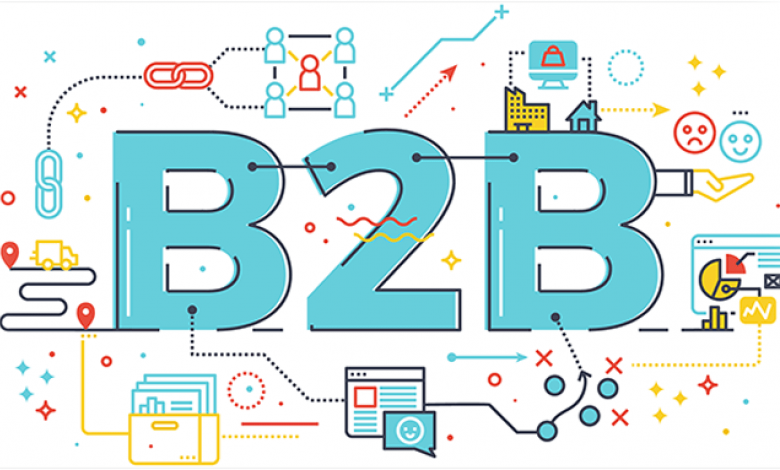Taking on 5 Market-Driven Trends in B2B Ecommerce

By 2018, B2B eCommerce will become the dominant revenue stream for most businesses.
This is no doubt.
People are buying more online than ever before. Even though consumers still spend most of their money offline in physical stores, that share is declining rapidly. Online sales have doubled in just five years, and they’re expected to account for nearly half of all retail sales by 2020.
A huge chunk of this shift towards online shopping comes from the business market. According to Forrester Research, “By 2020, spending at B2B ecommerce retailers will be greater than $1 trillion.” There’s a reason why Alibaba’s founder recently said he wants his company to become the fifth largest global economy! And when you look at other reports, like this one from 2016 by the U.S. Department of Commerce’s Economic and Statistics Administration (ESA), it shows that B2B spending accounts for 30% of all eCommerce sales!
So why does this matter? Buying online is just easier than ever before, which means that businesses are only going to increase their digital transactions in years to come. This will drive down prices because there’s more competition, so it makes sense to get involved now rather than later.
Here are eight trends you should know about.
1 – Large Enterprise Companies Are Stepping Up Their Game
We’ve talked about large enterprise companies before, but they’re starting to get really competitive with smaller, nimbler companies when it comes to eCommerce.
This is great for business owners and customers because it drives down prices and increases the overall efficiency of everything we buy online.
And, like we said earlier, this trend is only going to get stronger over the next few years: Gartner predicts that large companies will spend $1 trillion on B2B eCommerce by 2020. The ESA report mentioned above backs this up because it shows that big businesses are increasing their eCommerce sales faster than small businesses.
2 – Amazon Is Doing Everything in Its Power to Capture Market Share
In terms of sheer size, Amazon absolutely dwarfs every other company in its industry. It accounts for 40% of all U.S. ecommerce sales, which is a mind-boggling number.
This is why we see so many companies partnering with Amazon. It’s in a prime spot to capture market share in the B2C space, but it also wants to be dominant in business transactions too.
Amazon Business launched back in 2015, and there are already over 100,000 businesses using the marketplace. To give you an idea of how big this actually is, CNBC reported that “Customers are buying more than twice the number of products they did 12 months ago through Amazon Business.”
For example, GE Appliances recently partnered with Amazon Business to sell their commercial dishwashers directly on Amazon’s website. This has allowed them to tap into a new customer base while also increasing revenue for both companies.
GE Appliances’ Director of Commercial & Industrial Sales, Mike Jones, explained that “We’re adding additional products because we’re getting requests from customers who are buying on Amazon. It certainly takes time to get up there, but ultimately it was a no-brainer for us because it’s free reach and the impact to our business is positive.”
3 – More Companies Will Sell Via Third Parties
Although large companies like GE see the benefits in selling their own products directly on Amazon, smaller businesses will continue to sell through third parties. This way they avoid some of the headache with logistics and support issues while also opening up new doors in terms of customer acquisition and market penetration.
The ESA report backs this up: The average small business only sells 20% of their products through their own website, which means that traditional B2B ecommerce is still very much alive.
The other option for small companies is to partner with a company like Brand Labs, who have helped many ecommerce entrepreneurs build profitable brands on Amazon. They even have an Amazon Marketing Services team so you can tap into the platform’s advertising potential while also getting access to their market-leading logistics and customer support.
4 – You’ll See Vendor Central & Seller Central Converge
Brand Labs has already mentioned how smaller companies are using third-party platforms like Amazon, but big businesses are doing something similar too. For example, General Electric recently started selling through Sears’ Marketplace to expand its reach in brick-and-mortar retail stores.
This is because Amazon Business’s Vendor Central and Marketplace’s Seller Central are starting to converge. We’re seeing lots of companies go through the Vendor Central application process, especially after Amazon provided them with more support than ever back in May.
Amazon has added new perks like “account management, streamlined onboarding, increased payment terms, reduced storage fees,” and lower referral fees to attract big brands who want to sell on their platform.
The company even helped popular sneaker reseller Stadium Goods set up their own storefront too… which you can’t find on Amazon.com because they share products with other third-party merchants instead! This means that it’s becoming harder for smaller businesses to compete against large enterprises if they don’t have the resources to sell through multiples marketplaces like Amazon or eBay.
5 – You’ll Sell More via Facebook
There’s no doubt that social media is playing a bigger role in business-to-business sales too. According to the ESA study, “Over half of all B2B buyers have purchased via social media, up 20% from 2014.”
Big companies are tapping into this trend too with initiatives like General Electric’s Quirky + GE program, which works with inventors and entrepreneurs to design new products. The company broadcasts these ideas on its own website so other businesses can learn about them, but it also pushes them out through GE’s various social media accounts… including LinkedIn ! I’m sure you’ve heard how prevalent LinkedIn video ads are becoming since you can now share videos on your Company Page, but the fact is that GE is already using its LinkedIn presence to sell more than just industrial equipment.
Wrap Up
Selling business-to-business isn’t easy because every company has different requirements and resources available. That’s why I’m sharing these predictions with you so you can stay ahead of the curve in 2017! Part of this process involves finding companies who want to partner with you, which is why I wish you all the best with building your professional network. Remember that one key person could give you access to dozens (or even hundreds) of other industry experts… and eventually lead to a sale!




